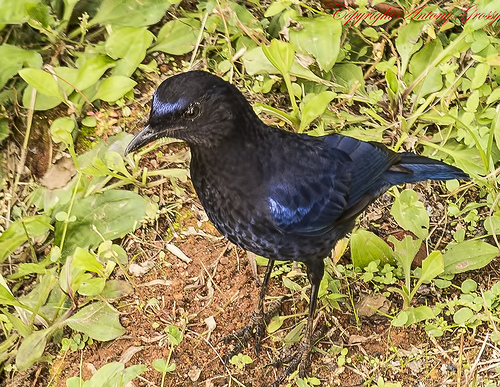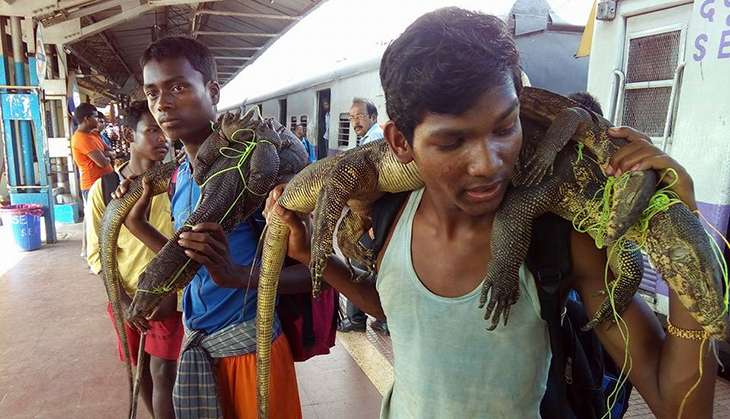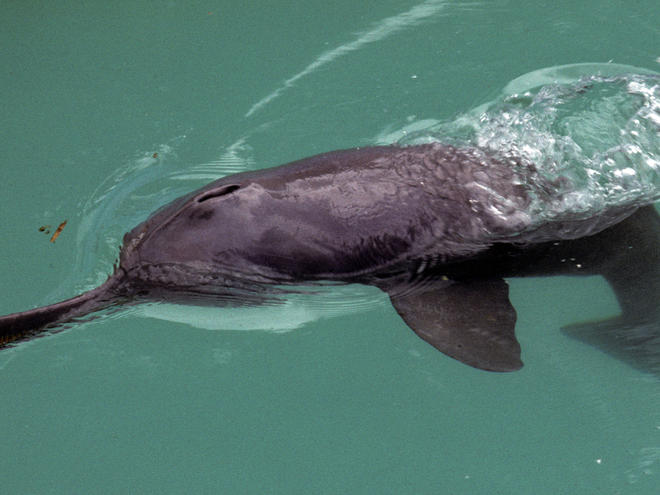The biodiversity loss has already occurred fear few naturalists at the department of environmental sciences, Andhra University, who say that the hilly slopes of Vishakhapatnam district and the nearby forested areas are changing for the worse.
The department has estimated that over 80,000 acres of forest land has been destroyed in this region in the last 32 years alone between 1980 and 2012. What is an additional problem is the remaining forest area has been taken over by foreign species that were planted here, ironically by the forest department to recover the forest area loss.
Pointing out that diversity in flora has a new meaning today, Professor A Solomon Raju said, “Intrusive non-native species are taking over the forest cover and artificial block plantations in many pockets of our reserve are threatening the existence of seasonal native plants in many ‘forested’ areas.”
Native loss
The Eastern Ghats in the Vishakhapatnam region were earlier known to be home to many peculiar plant species like the Native Basil, Fida, Justicia, Borreria and Merremia. Being a coastal area, these plants helped tremendously in preventing soil erosion, increasing moisture level of the soil and producing organic matter.
But after rapid urbnisations began to destroy forest covers, as a patchwork amendment, plantation of eucalyptus and timber plants were done. These foreign species took over robbed the native plant from space and sunshine.
The tussle of exotic and native species is a persistent problem the world over. When an exotic species is introduced to a local region, the intruder sometimes, slowly and steadily becomes the new dominant species, choking life out of the ancient native species.
What makes the situation in the Eastern Ghats worse is that the introduction of these non-local species was done as an afforestation measure taken by the forest department.
N Govinda Rao, a biotechnologist says, “The introduction of foreign species in a specific and sensitive ecosystem must be done carefully and care must be taken to ensure that they are friendly towards the ecosystem and not intrusive.”
However the forest department does not agree. Their belief is that by planting species of plants like quick growing plantations of Acacia, Cashew rina, Eucalyptus, Prosopis (Thumma) and Coffee, they are not just helping recover forest land and trees, but also providing commercially viable crop to the locals.
“We also need to take into consideration the fact that these trees have a commercial value. After all we cannot have the locals in conflict with the ecosystem. In the process, we try to find a balance. Environmentalists might say that we are compromising, but at least we are doing our bit to regenerate forest cover. At the end of the day, the block plantations can be slowly replaced by a natural forest cover.”
Ancient Roots
Unlike the Western Ghats that are now a world heritage site and a frequent topic of discussion among environmentalists, the Eastern Ghats of India are seldom in the limelight. But the variety of life forms it supports is equally spellbinding.
Experts say that Eastern Ghats are the most ancient forest cover of the subcontinent.
The structure of the forests here are three tiered, with trees dominating the area and supported by array of shrubs and then herbs.

Elaborating on this, Professor Solomon Raju said,
“The very sloping nature of the Ghats makes a three-tier forest absolutely necessary. The seasonal herbaceous species such as Hyptis and Ocymm are extremely eco-friendly, in the sense that they not only help bind the soil and absorb rain water but also act as generators of organic matter that help the forest sustain.”
Because the forest is sub-tropical, it allows a variety of species of plants and animals to flourish.
Sadly along with urbanization, illegal mining and shifting cultivation, the growth of non-native plants has changed the ecosystem of the region.
“Almost three species of butterflies have been wiped out and honey bees too are a threatened lot. If we do not act today and protect our forest cover, the implications would be serious as pollination itself could be affected. This means that food production would be drastically affected in the long run,” warned Dr Govind Rao.
In every living area of this earth, nature has planned its actions in such a way, that a local plant becomes the accepted shelter, fodder, food for a local animal and thereby both thrive in presence of each other. A frog can hop on lotus leaves with ease because the leaves too offer it a flat, firm ground on a wobbly surface. The amphibian would simply drown if one day the lotus leaves got replaced by a fern leaf, for example.
In the Eastern Ghats of India, species of animals like the golden gecko and critically endangered birds like Jerdon’s courser have found a secure habitat. For them it is not the foreign eucalyptus or the commercially viable crop of coffee, that is home. It is the native herbs, shrubs and trees. The present situation clearly shows that afforestation is clrealy not enough until, the plants that are being planted are helpful in bringing the balance back of the entire ecosystem and not just profitable to humans.
More Related Stories,
Jerdon’s Courser: A Precious Rarity







i had no idea that afforestation required such intricate analysis of the environment. This article is an eye opener for comman people. Recovering a destroyed forest with just any other tree has the potential to do more damage to the ecosystem tha good. For the simple matter, as an example, a monkey who feeds on fig cannot feed on coffe plants if the fig trees in its vicinity gets plucked out in the first place and later replaced with coffee plantation or eucalyptus trees; doesn’t make any logic.
Exactly Geetika. For any layman, a tree is just a tree as long as it is providing us with the air we breathe, but in nature, every species, every life form has a greater purpose of helping another life form. Before any ‘noble’ act of planting tree, or afforestation, if a little thought is given to the kind of vaiety that will serve the ecosystem better than others, it will be really a sustainable way of ensuring the safety of the entire ecosystem. Thank you for your valued comment.